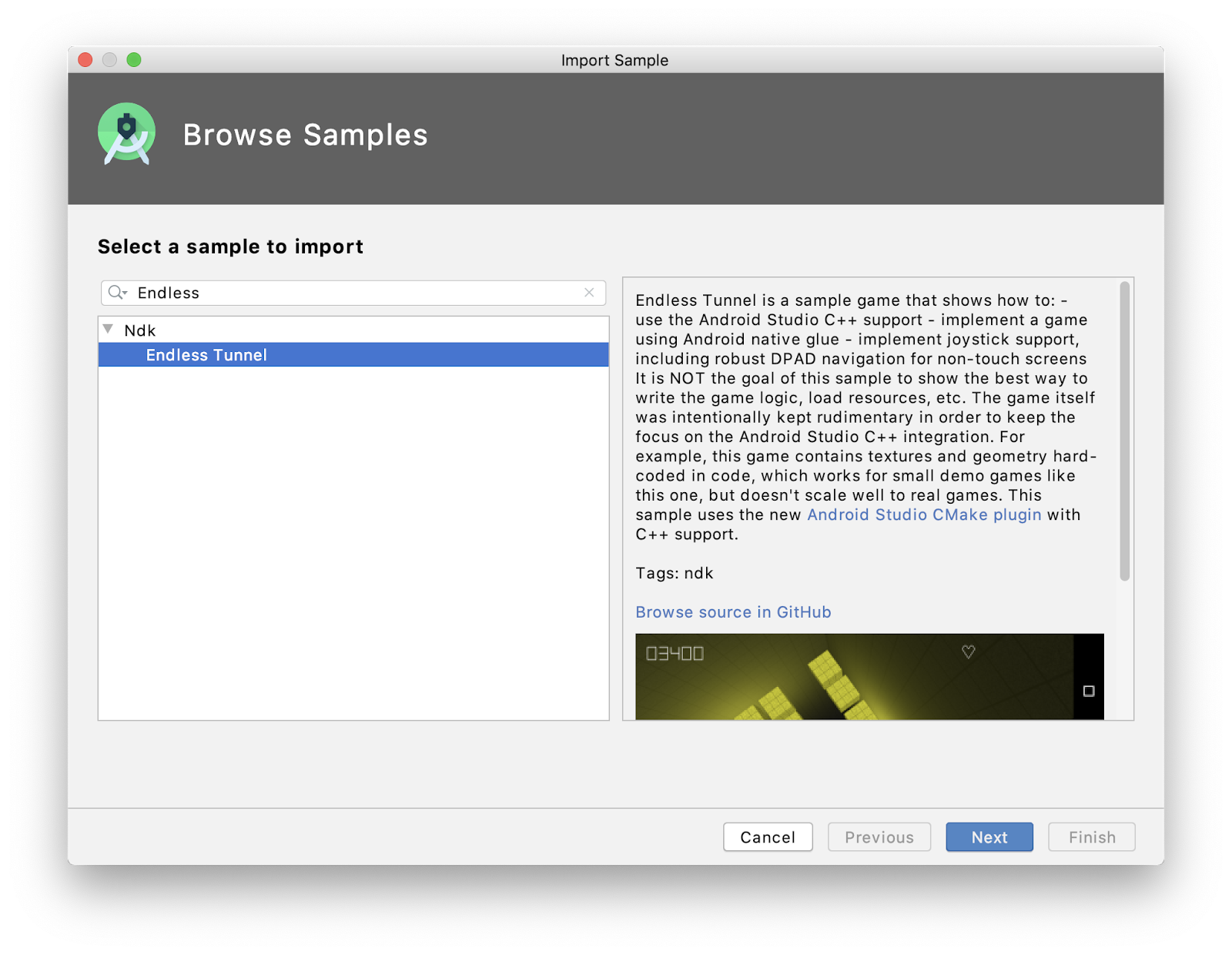

- #Android ndk sample code install
- #Android ndk sample code update
- #Android ndk sample code upgrade
- #Android ndk sample code full
- #Android ndk sample code android
If you have changes that you want to actually merge to React Native, make them on another branch first and open a PR. This allows you to make your fork into a functioning git dependency for React Native app projects.


gitignore and committing the binaries to your forked branch. Instead of uploading to Maven/Nexus, you can add the binaries built in the previous steps to git, by changing the.
#Android ndk sample code android
Upload the binaries from the android folder to maven and point your Android app project gradle dependency for React Native to your Maven/Nexus dependency. The resulting binary can be made available to app projects in one of the two ways described below. If you haven't used the Android NDK before or if you have a NDK version not exactly matching the required version for building React Native, this is the recommended approach. Then to build the actual library, you can run the following in the root of your react-native checkout: CMake: an external build tool that works.
#Android ndk sample code install
aar React Native library, you can follow the steps to build from source first to install all required tooling. The Android Native Development Kit (NDK): a set of tools that allows you to use C and C++ code with Android. You can achieve this in one of two ways: Git dependency branch, Android binary dependency through Maven. This binary needs to become available in your project's node_modules/react-native/android folder or directly in your gradle dependency of your Android app. The facebook/react-native repository contains all the dependencies required to be used directly as a git dependency, except for the Android React Native library binary (.aar). With this goal of a shortlived fork of React Native in mind, you can publish your own version of React Native.
#Android ndk sample code upgrade
This situation should be short lived by definition and once you have the time, the real solution is to upgrade to the latest version.
#Android ndk sample code full
Sometimes, though, you are temporarily stuck on an older React Native version, but you require some changes from newer versions urgently (bugfixes) without having to do a full upgrade right now. No support is provided on older versions and if you run into issues the contributors will always ask you to upgrade to the latest version before even looking at your particular issue.
#Android ndk sample code update
The recommended approach to working with React Native is to always update to the latest version. The last thing you need to do is adding the logging library to your Android.mk makefile: include $ ( CLEAR_VARS ). The log tag ( LOG_TAG) can be chosen freely. The log message is routed to Android’s logcat and has log level “info” (due to ANDROID_LOG_INFO). Xamarin.Android ProGuard is a Java class file shrinker, optimizer, and pre-verifier. Android NDK I created the code samples for this tutorial on a MacBook Pro with Android Studio 3.5.1. Here’s an example: #include #define LOG_TAG "testjni" #define ALOG(.) _android_log_print(ANDROID_LOG_INFO,LOG_TAG,_VA_ARGS_) void myMethod ( ) ĪLOG works like printf(), so you can add parameters to the log message. Unfortunately, I couldn’t get this working.įortunately, the Android NDK provides a logging API for C/C++. The Android NDK is a toolset that lets you embed components that make use of native code in your Android applications. The easiest form of logging I can think of is using printf(). If you don’t have a week to get the debugging toolchain working, and if you only need some quick and temporary solution, logging may be an alternative. Unfortunately (this is the “I don’t like this” part), debugging Android C/C++ code is terribly difficult. Download the Android NDK version required by Unity from the NDK Downloads web page, and then extract it to a directory. 2> Assuming you have you imported project as described above (New Project Create from existing code) - You right click the project and. 1> First you need to make sure NDK path is correct in Windows -> Preference -> (tabs) Android -> NDK - If not set - point it to ndk directory. The NDK is a toolset that allows you to implement parts of your app using native-code languages such as C and C++.

1> First you need to make sure NDK path is correct in Windows -> Preference -> (tabs) Android -> NDK - If not set - point it to ndk directory. There is a way to build the native library in Eclipse and NDK. Click Next to edit the app name and project. Choose Hello JNI from the filtered list under the Ndk category. I don’t like writing C/C++ code because it’s error-prone but sometimes there’s no other way. There is a way to build the native library in Eclipse and NDK. Select Import an Android code sample and type hello in the search box to filter the list. With the Android NDK Google lets us write C/C++ code for Android.


 0 kommentar(er)
0 kommentar(er)
